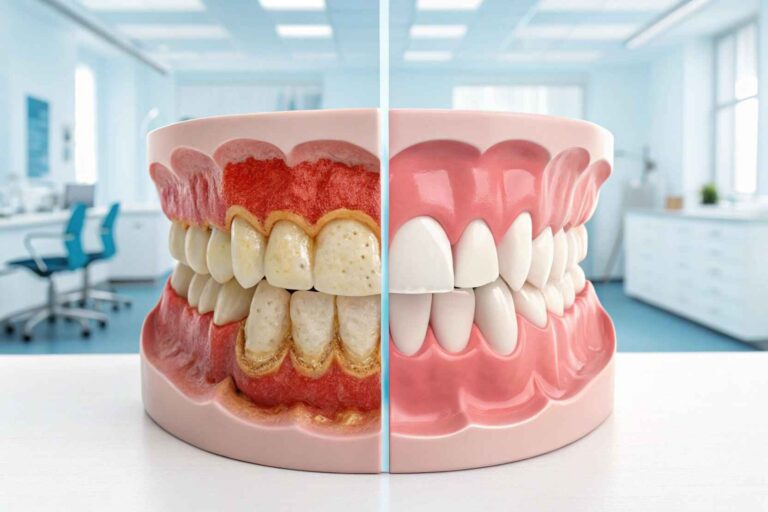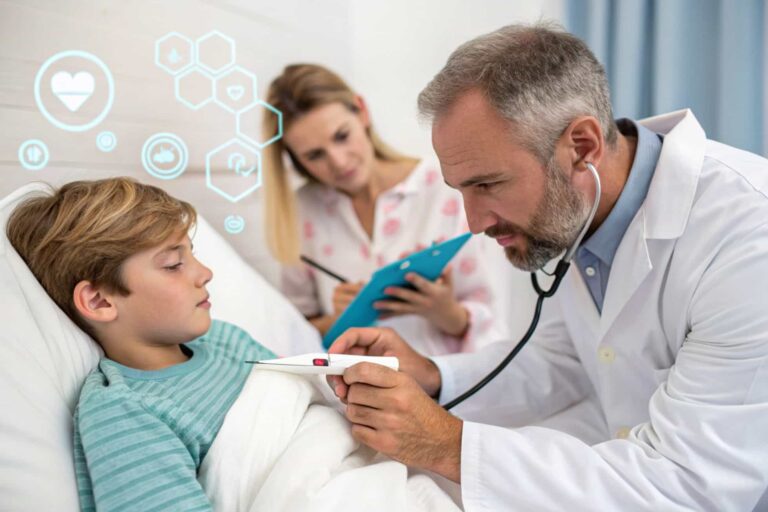Do Pap Smears Test For Sexually Transmitted Diseases – Avoid These Common Mistakes!
When it comes to women’s health, many questions arise about different medical tests and their purposes. One common question is: Do Pap smears test for sexually transmitted diseases (STDs)? A Pap smear is a routine test done during a well-woman exam to check the health of the cervix and screen for cervical cancer.
However, many people wonder if this test also detects STDs like chlamydia, gonorrhea, or herpes. It is important to understand exactly what a Pap smear can detect and what other tests you might need to ask your doctor for during your visit. This article will explain the role of Pap smears, the connection between Pap smears and STD testing, and what additional tests you might consider for comprehensive sexual health care.
What Is a Pap Smear and Why Is It Done?
A Pap smear, also known as a Pap test, is a medical procedure used to screen for cervical cancer in women. During the test, a healthcare provider collects cells from the cervix — the lower, narrow end of the uterus. These cells are then examined under a microscope to detect any abnormalities.

The primary goal is to find precancerous or cancerous changes early when treatment is most effective. A Pap smear can also help identify infections or inflammation. It’s typically recommended for women between the ages of 21 and 65, every 3 to 5 years. Early detection through a Pap smear can save lives. It’s a simple, quick, and generally painless test.
What Does a Pap Smear Actually Detect?
- Precancerous cervical cell changes: A Pap smear helps detect abnormal cell growth on the cervix, which may indicate a risk of cervical cancer in the future. Early detection allows doctors to monitor or treat these changes before they turn into a serious health problem.
- Cervical cancer: If cervical cells have already become cancerous, a Pap smear can help identify them in the early stages. Detecting cancer early increases the chances of successful treatment and can significantly reduce the risk of the disease spreading or becoming life-threatening.
- HPV-related cell changes: High-risk types of human papillomavirus (HPV) can cause cell changes on the cervix. A Pap smear may detect these changes, allowing further HPV testing or monitoring to prevent the development of cervical cancer caused by long-term HPV infection.
- Cervical inflammation: A Pap test can show signs of inflammation in cervical tissues, which may result from infections, allergies, or irritation. While not usually serious, inflammation may require follow-up to determine the cause and ensure there are no underlying health concerns.
- Some vaginal or cervical infections: Though not designed to diagnose STDs, Pap smears can sometimes reveal infections like bacterial vaginosis or yeast infections. These findings may lead to additional tests and treatments to manage symptoms and maintain overall reproductive health.
Also read: What Disease Does Lyle Lovett Have – The Full Story Behind The Rumors!
What Happens if Pap Smear Results Are Abnormal?
Abnormal results don’t always mean cancer. They may indicate:
- Minor changes often caused by HPV that may go away on their own
- More serious changes that require further evaluation, such as:
- Colposcopy (examining the cervix more closely)
- Biopsy (removing a small sample of tissue for testing)
Can STIs Be Detected in a Pap Smear?
A Pap smear is primarily used to detect abnormal cells in the cervix that may indicate cervical cancer or precancerous conditions. While it is not specifically designed to diagnose sexually transmitted infections (STIs), certain infections may sometimes be identified during the test:
- Human Papillomavirus (HPV): Many Pap smears are accompanied by an HPV test because this virus is closely linked to cervical cancer.
- Trichomoniasis: This parasitic infection can occasionally be detected in Pap smear samples.
However, most STIs—such as chlamydia, gonorrhea, syphilis, and herpes—are not typically identified through a Pap smear. These require separate, targeted tests.
Pap Smear Tests Check for STIs?
Standard Pap smears do not routinely screen for STIs. Their primary purpose is to detect cervical cell abnormalities, not infections. For a complete STI screening, different types of tests are used, including:
- Nucleic Acid Amplification Tests (NAATs): Commonly used for detecting chlamydia and gonorrhea.
- Blood Tests: Used to diagnose HIV, syphilis, and herpes.
- Urine Tests: Can also detect chlamydia and gonorrhea.
- Genital Swabs: May be collected to test for various other STIs.
If STI testing is needed based on symptoms or risk factors, your healthcare provider may collect additional samples during your pelvic exam.
Why Do People Think Pap Smear Tests for STDs?
Since Pap smears are performed during pelvic exams and involve collecting cervical cells, some believe they also check for other infections. This misunderstanding may come from the fact that the cervix is part of the reproductive system, where many STDs can cause symptoms or changes.
Additionally, some HPV infections are sexually transmitted, which links the Pap smear to a sexually transmitted virus.Still, most STDs require specific laboratory tests, such as urine samples, blood tests, or swabs from genital areas, not just the cervical cell samples taken during a Pap smear.
How Are STDs Tested?
To accurately diagnose sexually transmitted diseases, doctors use different tests depending on the infection. Here are common methods:
| STD | Typical Test Method | Sample Type |
| Chlamydia | Nucleic Acid Amplification Test | Urine or vaginal/cervical swab |
| Gonorrhea | Nucleic Acid Amplification Test | Urine or vaginal/cervical swab |
| Syphilis | Blood test (Rapid Plasma Reagin) | Blood |
| Herpes (HSV) | PCR test or viral culture | Swab from sores |
| HIV | Blood test or oral fluid test | Blood or saliva |
| Trichomoniasis | Microscopy or molecular tests | Vaginal swab or urine |
These tests are often done separately or as part of an STD panel, which can be requested during your well-woman exam.
Why Is It Important to Get Tested for STDs Separately?
Many STDs do not cause symptoms, especially in their early stages. This means you can have an infection without knowing it, which can lead to health complication and the spread of the infection to others. Separate STD tests provide accurate detection and help your healthcare provider offer the right treatment.
Early detection through specific testing can prevent serious problems like infertility, chronic pain, or transmission to partners. Relying only on a Pap smear may miss these infections, so separate testing ensures no infection goes unnoticed. Taking control of your sexual health means asking for the right tests at the right time.
Can a Pap Smear Detect Chlamydia or Gonorrhea?
Pap smears are not designed to detect chlamydia or gonorrhea. These infections affect the cervix and urethra but require specific tests for diagnosis. If you want to be tested for these STDs, you should ask your healthcare provider to perform additional screening using urine tests or cervical swabs.
Because chlamydia and gonorrhea often do not cause noticeable symptoms, regular screening is important, especially for sexually active individuals under 25 or those with new or multiple partners. Early detection through proper testing helps prevent complications such as pelvic inflammatory disease and infertility. Therefore, relying solely on a Pap smear is not enough to ensure your sexual health is fully monitored.
Can HPV Be Detected Through a Pap Smear?
Yes, HPV is the only sexually transmitted infection commonly detected during a Pap smear. In many cases, doctors perform an HPV test alongside the Pap smear, especially for women over 30 or if abnormal cells are found. This test looks for high-risk HPV types that can lead to cervical cancer.
Since HPV often has no symptoms, this screening is important for early detection and prevention. Regular Pap smears combined with HPV testing can catch changes before they turn into serious problems. Getting tested on time helps protect your health and reduces the risk of cervical cancer developing in the future.
Also read: Health Myloxarindor Qylendrithal – Real Solutions For Everyday Health!
What’s the difference between a Pap smear and an HPV test?
| Feature | Pap Smear | HPV Test |
|---|---|---|
| What it checks | Abnormal cervical cells | High-risk HPV types |
| Cancer detection | Detects cell changes (not cancer) | Detects virus that may cause cancer |
| When it’s done | Age 21+ every 3 years | Age 30+ every 5 years |
| Test method | Cervical cell sample | Same sample, tested for HPV DNA |
| Can be combined? | Yes, co-testing is common | Yes, done wi |
How HPV Can Lead to Cancer?
Human Papillomavirus (HPV) is the most widespread sexually transmitted infection (STI) worldwide. While most HPV types are harmless and clear up on their own, certain high-risk strains can cause changes in cervical cells. If these changes go undetected, they may develop into cervical cancer over time.

That’s why routine Pap smears and HPV testing are essential. They help identify abnormal cell changes early, giving doctors a chance to treat them before cancer develops. Also, the HPV vaccine offers strong protection against the types of HPV most likely to cause cancer.
Common Myths About Pap Smears and STD Testing – Separating Fact from Fiction!
To clarify, here are some myths about Pap smears and STD testing:
- Myth: Pap smears test for all STDs.
Fact: Pap smears only screen for cervical cell changes and HPV, not other STDs. - Myth: If my Pap smear is normal, I don’t have an STD.
Fact: A normal Pap smear does not rule out other STDs. You may still need specific tests. - Myth: Pap smears are painful and test everything I need.
Fact: Pap smears are generally not painful but may cause slight discomfort. They do not test for all STDs, so ask your doctor about additional screenings.
Also read: Does Periodontal Disease Go Away – Real Facts You Need Today!
What’s the Difference Between a Pap Smear and STD Testing?
| Test | Purpose | Detects | Sample Type |
| Pap Smear | Screen for cervical cancer and cell changes | Abnormal cervical cells, HPV (if tested) | Cervical cell sample |
| Chlamydia & Gonorrhea | Diagnose bacterial STDs | Chlamydia trachomatis, Neisseria gonorrhoeae | Urine or cervical/vaginal swab |
| Syphilis | Diagnose bacterial STD | Treponema pallidum | Blood |
| Herpes (HSV) | Detect herpes simplex virus infection | HSV type 1 & 2 | Swab from sores |
| HIV | Detect human immunodeficiency virus | HIV antibodies or RNA | Blood or saliva |
| Trichomoniasis | Diagnose parasitic STD | Trichomonas vaginalis | Vaginal swab or urine |
FAQs:
1. Will an STD show up on a Pap smear?
A Pap smear is mainly for detecting abnormal cervical cells and HPV. It does not detect most other STDs, like chlamydia or gonorrhea. To find these infections, separate tests such as urine samples or swabs are needed for accurate diagnosis.
2. What diseases can be detected by a Pap smear?
Pap smears detect changes in cervical cells and the presence of high-risk HPV types that can cause cervical cancer. However, they do not detect other common sexually transmitted infections like herpes, syphilis, or HIV, which require different specific tests.
3. What test shows sexually transmitted disease?
Different STDs require different tests. Common tests include urine tests, blood tests, and swabs from the affected area. These help detect infections such as chlamydia, gonorrhea, syphilis, HIV, and herpes, which cannot be detected through a Pap smear alone.
4. Do gynecologists automatically check for STDs?
Gynecologists usually perform Pap smears during routine exams, but don’t always test for STDs unless you mention symptoms or risk factors. It is important to ask for specific STD testing to ensure proper screening and early treatment if needed.
5. How often should I get tested for STDs?
Testing frequency depends on your lifestyle and risk level. Generally, sexually active people should get screened for STDs at least once a year. If you have multiple partners or symptoms, more frequent testing is advised to protect your health and your partners.
Conclusion:
To sum up, do pap smears test for sexually transmitted diseases? The answer is mostly no. Pap smears are essential for cervical cancer screening and can detect certain types of HPV, which is an STD linked to cancer risk. However, for most other sexually transmitted infections, specific tests separate from a Pap smear are needed.
During your well-woman exam, it’s important to talk openly with your healthcare provider and request the STD tests that you need based on your sexual activity and risk factors. Regular testing and prevention, including HPV vaccination, play a key role in maintaining good reproductive and sexual health.
Related post:






